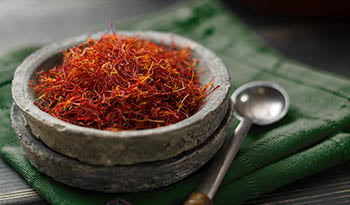白藜芦醇:可能对精神健康有益的强大防氧化成分
免责声明:本博客不提供诊断⋯

白藜芦醇是什么?
白藜芦醇(RSV) 是一种天然的多酚,具有植物雌激素的功能。它存在于浆果、 坚果、葡萄和其他广泛使用于亚洲医学的植物来源中。来自动物和人体试验的累积研究结果,显示白藜芦醇的防炎和 防氧化 作用可能对多种医学和精神疾病有好处,但大多数人类临床试验的结果受到研究设计缺陷和样本量小的限制。白藜芦醇可能会引起的基因表达变化和热量限制所导致的类似,因此其对延长寿命的潜在影响正在被研究,但是对非人类灵长类动物的研究结果并不一致。
白藜芦醇如何起作用?
白藜芦醇 对情绪、焦虑和认知功能的效益可能是由多种机制介导。有越来越多的研究结果指出,白藜芦醇可能有预防神经退行性疾病的作用,并可能会减慢认知症状的发展速度。一些动物研究显示,白藜芦醇可能对帕金森氏症、亨廷顿舞蹈症、多发性硬化症、阿兹海默症和其他神经退行性疾病具有神经保护作用。根据一些活体研究,白藜芦醇可遏抑磷酸二酯酶4,产生类似抗抑郁药和抗焦虑药的作用。最近发表的一项研究报称,在一个躁狂症动物模型中,白藜芦醇在许多大脑区域中预防和逆转了对蛋白质和脂质的氧化损伤。白藜芦醇有助于降低代谢症候群的风险,从而减少了身体和大脑的发炎;可促进脑动脉血管舒张;对内侧皮质和下丘脑区域有直接的神经保护作用;因此,白藜芦醇可能对阿兹海默症有益处。最后,白藜芦醇在DNA中诱导表观遗传变化,这可能会降低患上各种慢性疾病的风险。
白藜芦醇如何改善认知功能?
动物试验和几个人类临床试验的积累研究结果,导致人们对 白藜芦醇 这些可能性的兴趣日益浓厚:增强健康成年人的认知功能、以及作为阿兹海默症和其他退行性神经系统疾病的潜在疗法。
迄今为止,关于白藜芦醇和其他植物雌激素对健康人群认知方面的作用,研究结果并不一致,这可能反映了剂量、研究持续时间和评估认知功能的试验的差异。健康的男性接受白藜芦醇(250至500毫克)的短期治理后,脑血流量呈剂量依赖性增加,但认知功能并未改善。在一项为期4周的研究中,接受500毫克白藜芦醇疗程的健康成年人报告其疲劳程度显著降低,但认知能力没有变化。在一项为期26周的研究中,健康的超重老年人接受结合了白藜芦醇和 槲皮素 的疗程后,记忆力有所改善、海马体的功能连接性增强、大脑葡萄糖代谢提高。对于健康的老年人,白藜芦醇中可能具有增强认知的作用。一个系统性评估分析了23项随机对照试验,发现老年男性和绝经后女性每天服用白藜芦醇150至200毫克至少14周后,认知功能有小至中度的改善。认知功能改善与脑血流量改善相关。
白藜芦醇等多酚类化合物可能有预防阿兹海默症的作用,因此引起了越来越多的研究兴趣,然而,这项工作仍处于非常早期的阶段,只进行过几个临床试验。一项为期52周的安慰剂对照双盲多中心第二阶段研究,探索了白藜芦醇的安全性和耐受性;在研究中,被诊断患有轻度至中度阿兹海默症(AD)的个人(N = 119)被随机分为安慰剂组与白藜芦醇组。白藜芦醇组的个人开始剂量为每天500毫克,每13周增加500毫克,直至达到每天2000毫克的最大剂量。研究进行期间收集的数据包括AD的生物标记、容积磁共振造影和临床结果。研究发现,白藜芦醇组的人的CSF生物标记水平下降得比较慢,这可能反映了脑内β类淀粉蛋白质的积累减少。值得注意的是,白藜芦醇组的MMP-9水平也降低了(AD相关的神经变性过程的风险增加,被认为与MMP-9这种生物标记有关)。这个发现显示,白藜芦醇可降低血脑屏障对促炎分子的通透程度,从而发挥直接的神经保护作用。最常见的不良反应是恶心、腹泻和体重减轻。一项回顾性研究对一个AD患者子集进行了分析,这些受试者都是在上述的第2阶段研究中接受了白藜芦醇的患者。结果显示,与安慰剂组相比,CSF和血浆生物标记均明显好转,而日常生活活动(ADL)测量的分数也有所改善。要分析与白藜芦醇相关的AD生物标记变化的重要性,需要进一步的研究。
白藜芦醇和抑郁症
白藜芦醇 作为治理情绪低落的潜在方法,研究还处于非常早期的阶段。根据活体和动物研究的结果,对于氧化应激和发炎引致的、可能表现为情绪低落的脑部病理变化,白藜芦醇可能具有神经保护作用。在这些发现促使下,对白藜芦醇作为潜在抗抑郁剂的兴趣最近在增加。
白藜芦醇安全吗?
对于通常建议剂量的白藜芦醇,一般人都有很好的耐受性。白藜芦醇最常见的副作用是腹泻、恶心和体重减轻。据报告,每天两次2000毫克的高剂量会产生更严重的副作用。尚未有不良的药物相互作用的报告,但是已知高剂量的白藜芦醇会遏抑细胞色素P450酶,因而可能导致与许多药物的相互作用。
如何充分利用白藜芦醇补充品
一个正在进行的重要研究领域涉及具有更高生物利用度的产品开发,旨在增加 白藜芦醇 对身体和大脑的潜在益处。白藜芦醇稳定性低、暴露于热和光下会迅速氧化、水溶性低、被肝脏吸收的比率高,因此其生物利用度低,如果单独服用,对认知 的潜在益处可能会受到限制。活体和动物研究的结果显示,与其他天然产品合用时,白藜芦醇于不同临床适应症的生物利用度和功效均可能得到增强。最近的一项研究发现,白藜芦醇与胡椒碱合用可显著提高其于大脑的生物利用度,并导致脑血流量增加,但并未改善认知功能或情绪。要阐明遗传差异、年龄、性别、饮食和微生物的变异如何影响白藜芦醇的生物利用度,需要进行大规模的动物和人类试验。生物利用度在不同的个人中表现的差异,意味著白藜芦醇的最低有效剂量(单独服用、或与其他天然产品一起服用、或作为药物的辅助手段服用)需要逐案评估。
有人正在致力以新的递送系统和半合成衍生物来改善白藜芦醇的生物利用度,包括以脂质纳米载体、脂质体、纳米乳剂和其他方法进行纳米封装。据报告,已经出现了有前景的早期结果,但是还需要进行更多的活体研究,以鉴定适合临床使用的安全方法。
白藜芦醇是有前景的化合物
白藜芦醇 将来有望成为许多疾病和神经精神障碍的重要非药物疗法。白藜芦醇作为阿兹海默症的认知能力下降、其他神经退行性疾病和情绪低落的潜在疗法,研究仍处于早期阶段。迄今为止,大多数研究证据均来自动物研究。人体临床试验只进行了几个,大部分均是以健康的人为对象。需要进行长期的大型安慰剂对照人类临床试验,以评估白藜芦醇的安全性、进一步了解它与其他天然产品或药剂的潜在相互作用、确定可提高生物利用度的配方、以及确定用于疾病和神经精神障碍的理想安全剂量。
参考文献:
- Adeghate E, Donath T, Adem A. (2013) Alzheimer disease and diabetes mellitus: do they have anything in common?Curr Alzheimer Res.; 10:609–617.
- Amri A, Chaumeil JC, Sfar S, Charrueau C. (2012) Administration of resveratrol:What formulation solutions to bioavailability limitations?J Control Release.; 158:182–193.
- Baur JA, Sinclair DA. (2006) Therapeutic potential of resveratrol: the in vivo evidence.Nat Rev Drug Discov.; 5:493–506.
- Blanchet J, Longpre F, Bureau G, Morissette M, DiPaolo T, et al (2008) Resveratrol, a red wine polyphenol, protects dopaminergic neurons in MPTP-treated mice.Prog Neuropsychopharmacol Biol Psychiatry.; 32:1243–1250.
- Chimento, A., De Amicis, F., Sirianni, R., Stefania, M. et al (2019) Progress to Improve Oral Bioavailability and Beneficial Effects of Resveratrol J Mol Sci.; 20(6):1381.
- Colman RJ, Beasley TM, Kemnitz JW, Johnson SC, Weindruch R, Anderson RM. (2014) Caloric restriction reduces age-related and all-cause mortality in rhesus monkeys.Nat Commun.; 5:3557.
- Cottart CH, Nivet-Antoine V, Beaudeux JL. (2014) Review of recent data on the metabolism, biological effects, and toxicity of resveratrol in humans.Mol Nutr Food Res.; 58:7–21.
- De Santi SC, Pietrabissa A, Spisni R, Mosca F, Pacifici GM. (2000) Sulphation of resveratrol, a natural compound present in wine, and its inhibition by natural flavonoids.Xenobiotica.; 30:857–866.
- Dhakal S, Kushairi N, Phan CW, Adhikari B, Sabaratnam V., et al (2019) Dietary Polyphenols:A Multifactorial Strategy to Target Alzheimer's Disease.Int J Mol Sci.;20(20). pii:E5090.
- Farhan M, Ullah MF, Faisal M, Farooqi AA, Sabitaliyevich UY, et al (2019) Differential Methylation and Acetylation as the Epigenetic Basis of Resveratrol's Anticancer Activity.Medicines (Basel). 13;6(1). pii:E24.
- Foti Cuzzola V, Ciurleo R, Giacoppo S, Marino S, Bramanti P.(2011) Role of resveratrol and its analogues in the treatment of neurodegenerative diseases: focus on recent discoveries.CNS Neurol Disord Drug Targets.; 10:849–862.
- Johnson JJ, Nihal M, Siddiqui IA, Scarlett CO, Bailey HH, et al (2011) Enhancing the bioavailability of resveratrol by combining it with piperine.Mol Nutr Food Res.; 55:1169–1176.
- Kennedy DO, Wightman EL, Reay JL, Lietz G, Okello EJ, et al (2010) Effects of resveratrol on cerebral blood flow variables and cognitive performance in humans: a double-blind, placebo-controlled, crossover investigation.Am J Clin Nutr.; 91:1590–1597.
- Kim D, Nguyen MD, Dobbin MM, Fischer A, Sananbenesi F, et al (2007) SIRT1 deacetylase protects against neurodegeneration in models for Alzheimer’s disease and amyotrophic lateral sclerosis.EMBO J.; 26:3169–3179.
- Kumar P, Padi SS, Naidu PS, Kumar A. (2006) Effect of resveratrol on 3-nitropropionic acid-induced biochemical and behavioural changes: possible neuroprotective mechanisms.Behav Pharmacol. 17:485–492.
- La Porte C, Voduc N, Zhang G, Seguin I, Tardiff D, Singhal N, Cameron DW. (2010) Steady-State pharmacokinetics and tolerability of trans-resveratrol 2000 mg twice daily with food, quercetin and alcohol (ethanol) in healthy human subjects.Clin Pharmacokinet.; 49:449–454.
- Mattison JA, Roth GS, Beasley TM, Tilmont EM, Handy AM, et al (2012) Impact of caloric restriction on health and survival in rhesus monkeys from the NIA study.Nature.; 489:318–321.
- Maturitas. 2014 Mar;77(3):209-20.Phytoestrogens and cognitive function: a review.Soni M1, Rahardjo TB2, Soekardi R2, Sulistyowati Y2, Lestariningsih2, Yesufu-Udechuku A3, Irsan A4, Hogervorst E5.
- Menegas S, Ferreira CL, Cararo JH, Gava FF, et al (2019) Resveratrol protects the brain against oxidative damage in a dopaminergic animal model of mania.Metab Brain Dis.;34(3):941-950.
- Mercken EM, Carboneau BA, Krzysik-Walker SM, de Cabo R. (2012) Of mice and men: the benefits of caloric restriction, exercise, and mimetics.Ageing Res Rev.; 11:390–398.
- Miller RA, Harrison DE, Astle CM, Baur JA, Boyd AR, et al (2011) Strong R. Rapamycin, but not resveratrol or simvastatin, extends life span of genetically heterogeneous mice.J Gerontol A Biol Sci Med Sci.; 66:191–201.
- Moussa C, Hebron M, Huang X, Ahn J, Rissman RA., et al (2017) Resveratrol regulates neuro-inflammation and induces adaptive immunity in Alzheimer's disease.J Neuroinflammation. 2017 Jan 3;14(1):1.
- Pearson KJ, Baur JA, Lewis KN, Peshkin L, Price NL, et al (2008) Resveratrol delays age-related deterioration and mimics transcriptional aspects of dietary restriction without extending life span.Cell Metab.; 8:157–168.
- Popat R, Plesner T, Davies F, Cook G, Cook M, et al (2013) A phase 2 study of SRT501 (resveratrol) with bortezomib for patients with relapsed and or refractory multiple myeloma.Br J Haematol.; 160:714–717.
- Santos AC, Veiga F, Ribeiro AJ. (2011) New delivery systems to improve the bioavailability of resveratrol.Expert Opin Drug Deliv. 2011 Aug;8(8):973-90.
- Shindler KS, Ventura E, Dutt M, Elliott P, Fitzgerald DC, Rostami A. (2010) Oral resveratrol reduces neuronal damage in a model of multiple sclerosis.J Neuroophthalmol.; 30:328–339.
- Smoliga JM, Colombo ES, Campen MJ. (2013) A healthier approach to clinical trials evaluating resveratrol for primary prevention of age-related diseases in healthy populations.Aging (Albany NY).; 5:495–506.
- Soni M, White LR, Kridawati A, Bandelow S, Hogervorst E. (2016) Phytoestrogen consumption and risk for cognitive decline and dementia:With consideration of thyroid status and other possible mediators.J Steroid Biochem Mol Biol.;160:67-77.
- Strong R, Miller RA, Astle CM, Baur JA, de Cabo R, et al (2013) Evaluation of resveratrol, green tea extract, curcumin, oxaloacetic acid, and medium-chain triglyceride oil on life span of genetically heterogeneous mice.J Gerontol A Biol Sci Med Sci.; 68:6–16.
- Sun AY, Wang Q, Simonyi A, Sun GY. (2010) Resveratrol as a therapeutic agent for neurodegenerative diseases.Mol Neurobiol.; 41:375–383.
- Zhu X, Li W, Li Y, Xu W, Yuan Y, et al (2019) The antidepressant- and anxiolytic-like effects of resveratrol:Involvement of phosphodiesterase-4D inhibition.Neuropharmacology. 15;153:20-31.
- Turner RS, Thomas RG, Craft S, van Dyck CH, Mintzer J. et al (2015) A randomized, double-blind, placebo-controlled trial of resveratrol for Alzheimer disease. Neurology. 2015 Oct 20;85(16):1383-91.
- Wang F, Wang J, An J, Yuan G, Hao X, Zhang Y., (2018) Resveratrol ameliorates depressive disorder through the NETRIN1-mediated extracellular signal-regulated kinase/cAMP signal transduction pathway.Mol Med Rep.;17(3):4611-4618.
- Wightman EL, Haskell-Ramsay CF, Reay JL, Williamson G, Dew T., et al (2015) The effects of chronic trans-resveratrol supplementation on aspects of cognitive function, mood, sleep, health and cerebral blood flow in healthy, young humans.Br J Nutr. 14;114(9):1427-37.
- Wightman EL, Reay JL, Haskell CF, Williamson G, Dew TP, Kennedy DO. (2014) Effects of resveratrol alone or in combination with piperine on cerebral blood flow parameters and cognitive performance in human subjects: a randomised, double-blind, placebo-controlled, cross-over investigation.Br J Nutr.; 112:203–213.
- Witte AV, Kerti L, Margulies DS, Floel A. (2014) Effects of Resveratrol on Memory Performance, Hippocampal Functional Connectivity, and Glucose Metabolism in Healthy Older Adults.J Neurosci.; 34:7862–7870.
- Zaw, T., Howe, P., Wong, R. (2017) Does phytoestrogen supplementation improve cognition in humans?A systematic review.Ann N Y Acad Sci.;1403(1):150-163.

 作者 詹姆斯·莱克博士(Dr. James Lake),医级博士
作者 詹姆斯·莱克博士(Dr. James Lake),医级博士


